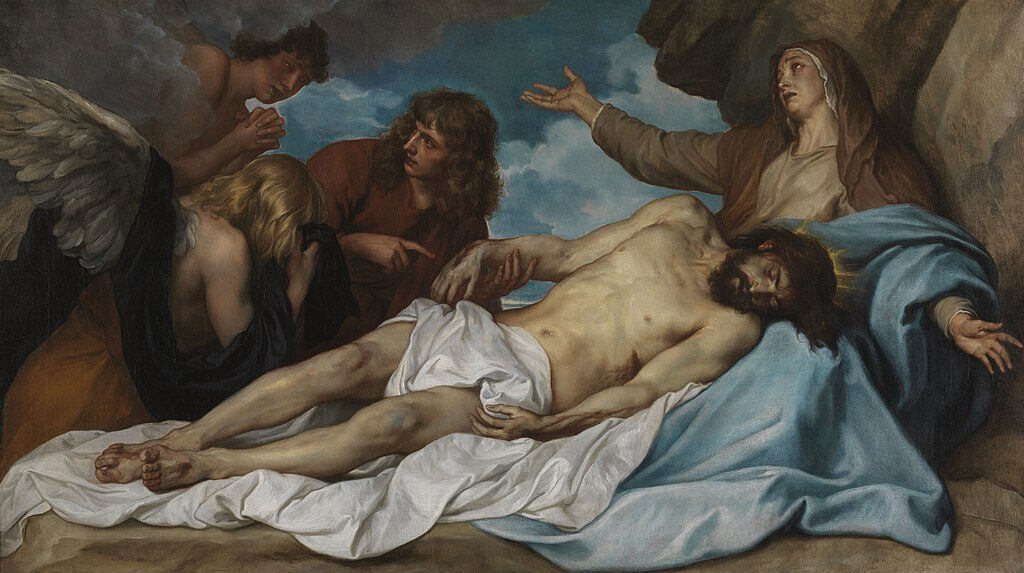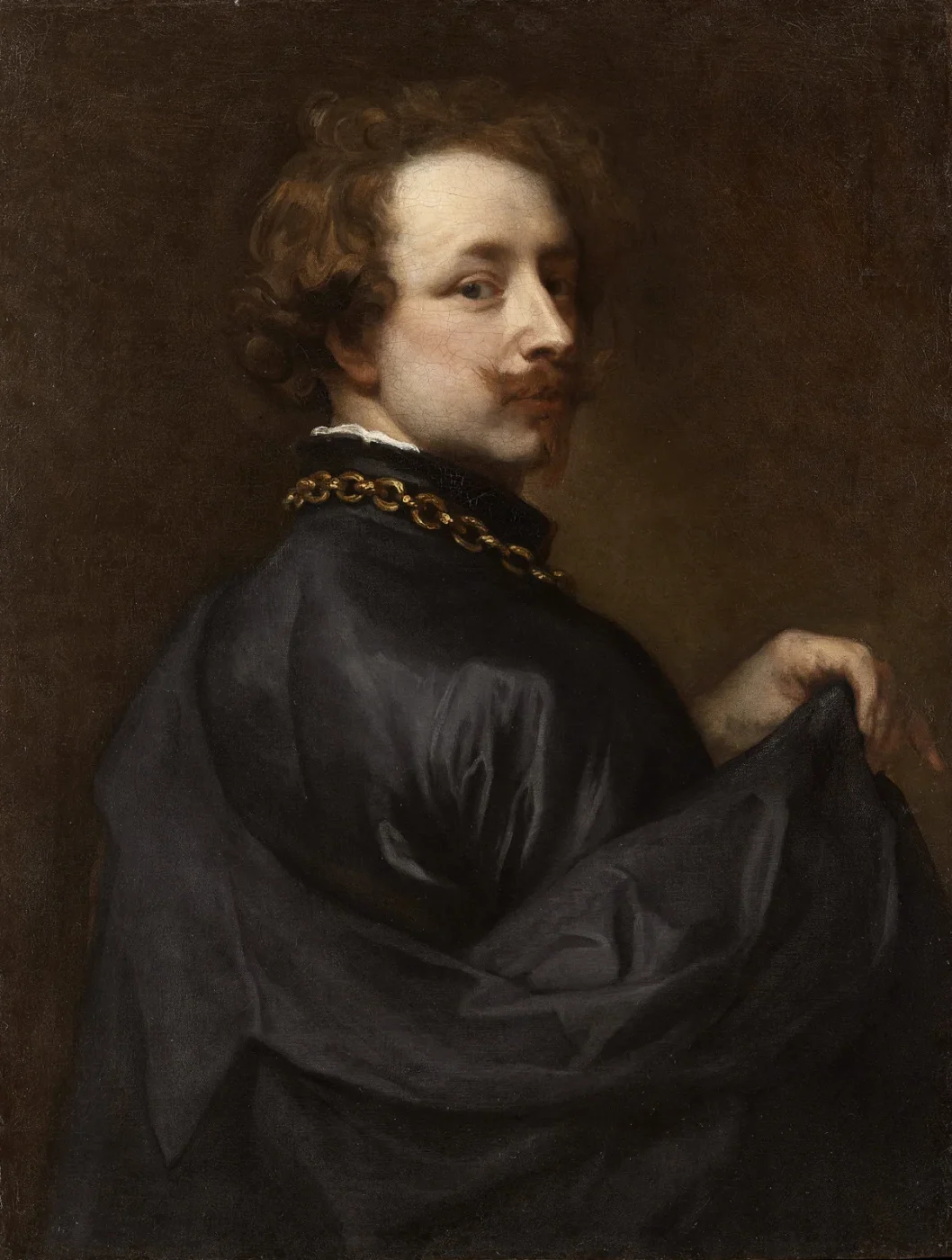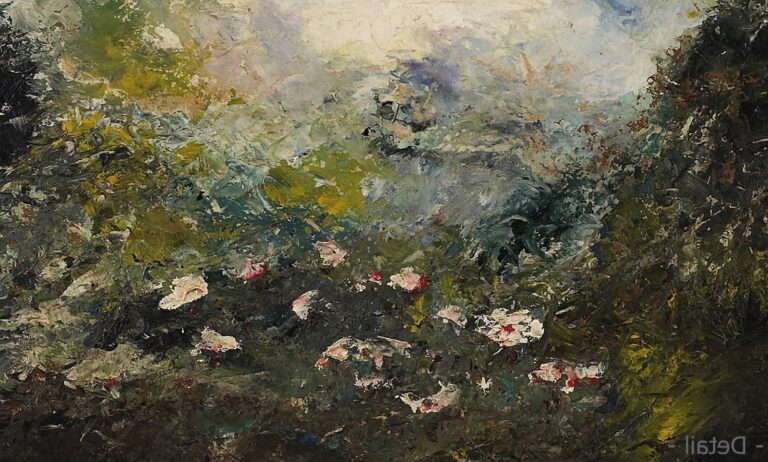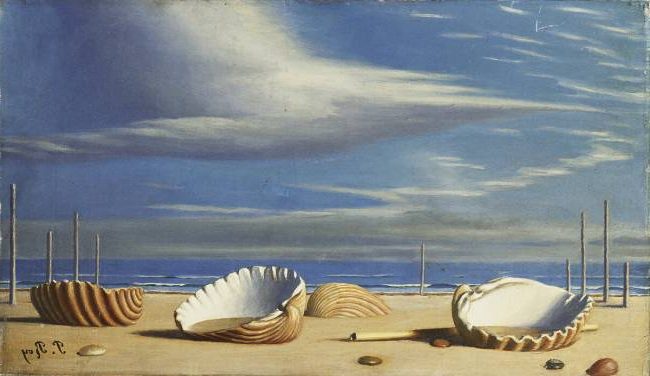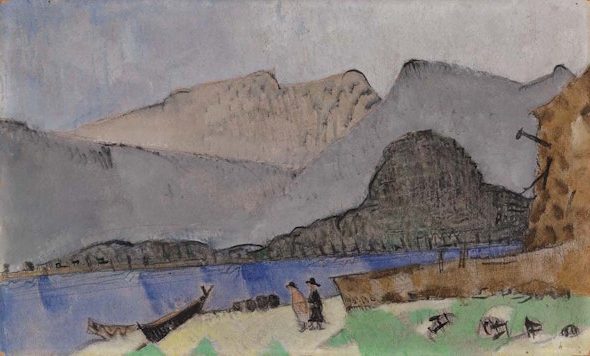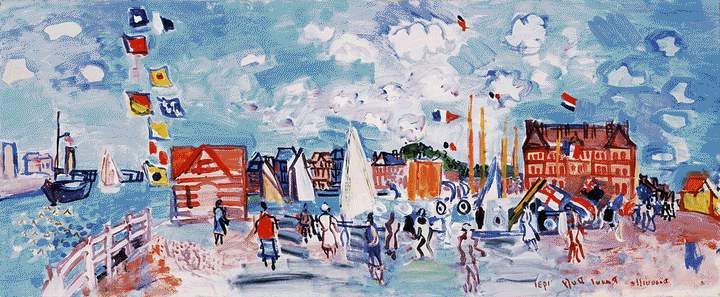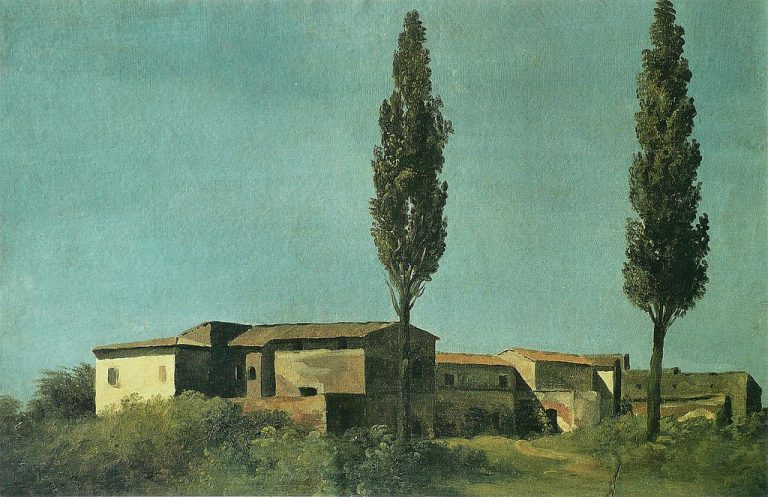Anthony van Dyck Painter: The Flemish Master Who Transformed Portrait Art
Born: 22 March 1599, Antwerp, Spanish Netherlands
Death: 9 December 1641, London, Kingdom of England
Mouvement artistique : Baroque
Nationalité : Flamand
Influenced By: Peter Paul Rubens
Anthony van Dyck Painter: The Flemish Master Who Transformed Portrait Art
Vie précoce et formation artistique
Anthony van Dyck was born into a wealthy merchant family in Antwerp on March 22, 1599. His remarkable artistic talent emerged at a very young age. This set the foundation for what would become an illustrious career as one of the most significant Flemish painters in history.
Antwerp Origins and Hendrik van Balen
Anthony grew up in a financially comfortable environment in Antwerp. His artistic abilities were evident by age 11, showing exceptional promise even as a child.

Samson and Delilah (c. 1630) by Anthony van Dyck
Around this time, van Dyck began his formal artistic training under Hendrik van Balen, an established Flemish painter. This apprenticeship provided the young artist with essential technical skills and knowledge of the Flemish painting tradition.
By his late teens, van Dyck had already developed impressive independent artistic capabilities. His talent accelerated his progress through the traditional guild system. On October 18, 1617, at only 18 years old, he achieved the status of master in the Antwerp Guild. This was an extraordinary accomplishment for someone so young.
Influence of Peter Paul Rubens
Van Dyck’s artistic development took a significant turn when he entered the workshop of Peter Paul Rubens, the dominant artistic figure in Antwerp. Under Rubens’ guidance, van Dyck refined his technique and developed his distinctive style.
Rubens quickly recognized van Dyck’s exceptional talent. The young artist absorbed Rubens’ dramatic compositions, rich colors, and dynamic figural arrangements while working as his assistant.
This influential period helped van Dyck develop his own artistic voice, particularly in portraiture. While maintaining elements of Rubens’ Baroque style, van Dyck created works with more restraint and elegance, especially evident in his treatment of fabric textures and facial expressions.
By 1620-21, van Dyck was producing independent works that demonstrated his ability to move beyond his mentor’s influence. This period of training under two master artists—first van Balen and then Rubens—established the foundation for van Dyck’s remarkable career.
Notable Works and Artistic Evolution

Charles I in Three Positions (1635–36) by Anthony van Dyck
Van Dyck’s artistic journey shows a remarkable evolution from his early collaborations to his mature style. His work transformed through various influences while maintaining his distinctive approach to portraiture and religious subjects.
Collaboration with Rubens and Italian Masters
Van Dyck began his career in Peter Paul Rubens’ workshop, where he quickly distinguished himself as a prodigy. By age 18, he was already Rubens’ chief assistant, learning the master’s techniques while developing his own style. This early period shaped his approach to composition and color.
In 1621, Van Dyck traveled to Italy where he studied the works of Italian masters. He was particularly drawn to Titian’s use of light and color. During this time, he created notable religious works like “The Taking of Christ” and continued refining his portrait techniques.
His Italian sketchbook from this period reveals his careful study of Renaissance masterpieces. These influences would later merge with his Flemish training to create his distinctive baroque style.
Success in Genoa and the Influence of Titian
In Genoa, Van Dyck found tremendous success among the aristocracy. His portraits of Genoese nobility showcased his ability to capture both likeness and elegance. The “Portrait of Elena Grimaldi” exemplifies his mature style with its rich fabrics and dignified pose.
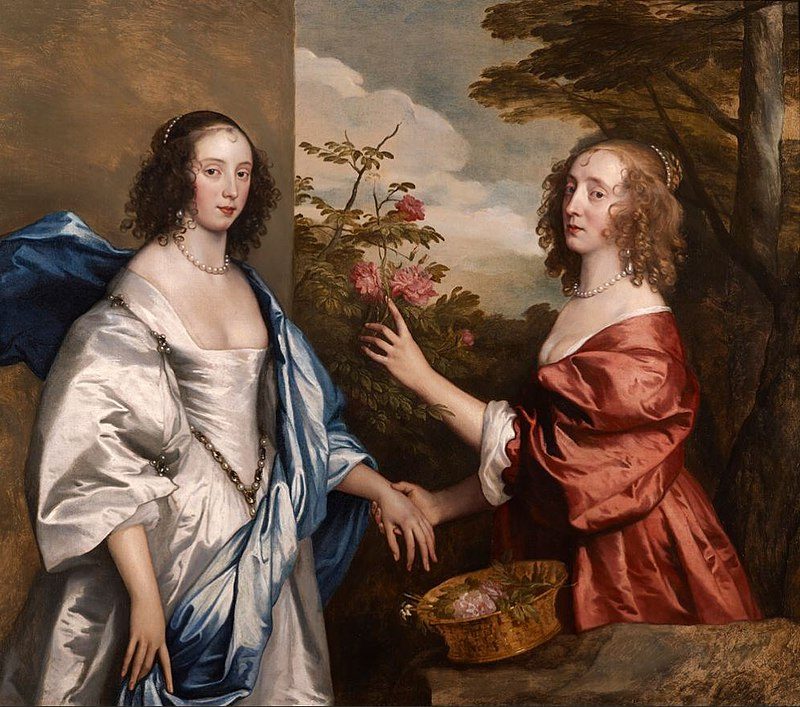
The Cheeke Sisters (1640) by Anthony van Dyck
Titian’s influence became most evident in Van Dyck’s use of warm, glowing colors and loose brushwork. He adopted Titian’s technique of creating depth through layers of transparent glazes, giving his paintings a luminous quality.
His Genoese period produced some of his most celebrated works, including “Portrait of a Woman” and several self-portraits that demonstrate his growing confidence and skill. These works established Van Dyck as one of Europe’s premier portrait artists.
Return to Antwerp and Creative Flourishing
After returning to Antwerp in 1627, Van Dyck entered a period of remarkable creativity. He produced religious paintings for local churches and continued portrait commissions for wealthy patrons. His “Madonna of the Rosary” shows his mature religious style.
During this period, he developed a distinctive approach to portraiture featuring elegant, elongated figures set against dramatic landscapes or architectural elements. His oil on canvas techniques became more refined, with particular attention to rendering fabrics and jewelry.
Van Dyck’s workshop became an important center for art production. He trained numerous assistants while maintaining quality control over their output. His influence spread throughout Europe, particularly in his approach to aristocratic portraiture that balanced formality with psychological insight.
Court Painter and Legacy

Philip, 4th Earl of Pembroke and His Family (c. 1630) by Anthony van Dyck
Anthony van Dyck rose to prominence as one of the most influential court painters in European history. His elegant style transformed royal portraiture and established new standards for depicting nobility with both grandeur and humanity.
Role as the Portraitist of Charles I of England
Van Dyck’s appointment as principal painter to Charles I in 1632 marked a turning point in his career. He created over 40 portraits of the king, including the famous equestrian portrait showing Charles as a majestic, dignified ruler. These images powerfully shaped the public perception of the monarchy.
In London, van Dyck developed a distinctive approach that balanced formal dignity with natural elegance. His portraits featured rich colors, refined poses, and meticulous attention to luxurious fabrics and details.
The artist’s ability to capture both the regal authority and individual personality of Charles I established a new visual language for royal portraiture. The National Gallery and The Royal Collection still house many of these magnificent works.
Influence on English Portraiture and Gainsborough
Van Dyck’s impact on English portraiture lasted for centuries. His elegant style became the model for depicting the English aristocracy, influencing generations of artists.

Katherine, Countess of Chesterfield, and Lucy, Countess of Huntingdon (c. 1636–40)
Thomas Gainsborough openly admired van Dyck and studied his techniques. The fluid brushwork, graceful compositions, and refined sensibility in Gainsborough’s portraits clearly show van Dyck’s influence.
Van Dyck introduced a sense of shared humanity to formal portraiture. Even in his grandest compositions, his subjects appear as real people rather than mere symbols of power or wealth.
His techniques for rendering silk, lace, and other luxurious materials became standards for portraitists across Europe. This technical brilliance helped establish England as an important center for portraiture.
The Artistic Heritage and Collections
Van Dyck’s works are treasured in major museums worldwide. The National Gallery of Art, the Hermitage Museum, the Metropolitan Museum of Art, and the Prado Museum all feature significant collections of his paintings.
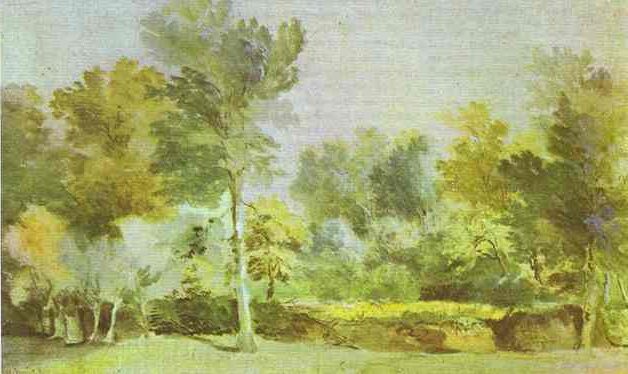
A Meadow, Surrounded by Trees (1635) by Anthony van Dyck
His artistic legacy extends beyond his paintings. Van Dyck’s “Iconography,” a collection of etched portraits of contemporary notable figures, influenced printmaking and portraiture for generations.
Art historians consider van Dyck a crucial bridge between the Baroque dynamism of Rubens and the more restrained elegance that would characterize later portraiture. His ability to combine technical brilliance with psychological insight makes his work timeless.
The distinctive “van Dyck beard” and elegant hand positions he favored became fashionable elements in portraiture that lasted well beyond his lifetime. These visual signatures demonstrate his profound cultural impact.
Questions fréquemment posées
Anthony van Dyck’s life and work inspire many questions from art enthusiasts and collectors alike. Below are answers to some common inquiries about this influential Flemish painter, his artwork, and his legacy.
What caused the death of Anthony van Dyck?
Anthony van Dyck died on December 9, 1641, at the age of 42. His death was primarily attributed to tuberculosis, which was common during that era. Some historical accounts suggest that his health had been declining for some time before his death.
Van Dyck was working as court painter to King Charles I of England when he passed away. His intense work schedule and the physical demands of his artistic career may have contributed to his deteriorating health.
Where can one find Van Dyck paintings for sale?
Van Dyck paintings occasionally appear at major auction houses such as Christie’s and Sotheby’s. These rare sales typically involve authenticated works with established provenance.
Reputable art galleries specializing in Old Masters sometimes offer Van Dyck paintings or drawings. Prices vary significantly based on size, subject matter, condition, and authentication.
Collectors should exercise extreme caution, as many copies and misattributed works exist in the market. Expert authentication is essential before any purchase.
What are some notable portraits by Van Dyck?
“Charles I at the Hunt” (1635) stands as one of Van Dyck’s masterpieces, depicting the English king in an elegant, informal pose that established a new standard for royal portraiture.
“Self-Portrait with a Sunflower” (1632-1633) shows the artist’s skill in self-representation and symbolic imagery.
“Queen Henrietta Maria with Sir Jeffrey Hudson” (1633) portrays Charles I’s wife in a magnificent gown, exemplifying Van Dyck’s ability to capture both royal dignity and personal character.
“The Five Eldest Children of Charles I” (1637) demonstrates his talent for depicting multiple figures with individual personality while maintaining compositional harmony.
In which National Gallery can Anthony van Dyck’s works be seen?
The National Gallery in London houses an impressive collection of Van Dyck paintings, including “Equestrian Portrait of Charles I” and several other royal portraits.
The National Gallery of Art in Washington, DC displays notable works like “Portrait of a Flemish Lady” and religious paintings by Van Dyck.
The National Gallery of Scotland in Edinburgh contains several important Van Dyck portraits, including works from his Italian period.
Many other national galleries worldwide, including those in Madrid, Vienna, and St. Petersburg, feature significant Van Dyck paintings in their permanent collections.
What is the estimated value of a Van Dyck painting?
Van Dyck paintings can command prices ranging from approximately $1 million to over $20 million, depending on several factors. His royal portraits typically fetch the highest sums at auction.
Size, subject matter, condition, and provenance significantly impact valuation. Works with clear documentation of ownership history tend to command premium prices.
In 2009, his “Portrait of Princess Mary, daughter of Charles I” sold for £9.6 million (approximately $14.5 million at that time) at Sotheby’s London, setting a record for the artist.
How many paintings are attributed to Anthony van Dyck?
Art historians attribute approximately 700-800 paintings to Anthony van Dyck. This makes him one of the most prolific painters of his era. This number includes works from his early Antwerp period, Italian sojourn, and English court years.
The Van Dyck catalog raisonné continues to evolve as scholars reassess attributions. Some works previously thought to be by Van Dyck have been reattributed to workshop assistants or followers.
During his time as court painter in England, Van Dyck maintained a large workshop. Many paintings were collaborative efforts between the master and his assistants.

